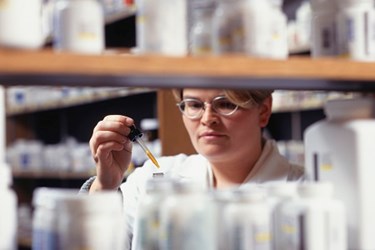Cinfa Biotech: How Pharmacists Can Benefit Biosimilar Development

By Anna Rose Welch, Editorial & Community Director, Advancing RNA

Last fall, Janet Woodcock, director of the FDA’s Center for Drug Evaluation and Research (CDER), faced inquiries from the U.S. Senate Subcommittee on Primary Health and Retirement Security about the agency’s progress toward releasing guidance on biosimilar interchangeability. “We have to get the science right,” she told Senator Elizabeth Warren. In fact, Woodcock asserted the scientific framework for biosimilars needed to be “bulletproof” to ensure the future success of the U.S. biosimilar market. With such emphasis being placed on the scientific aspects of biosimilar development, it would seem that biosimilar development centers solely around the science. After all, one of the biggest goals for companies striving to release a biosimilar in the newly established U.S. market is to present a candidate to the FDA that demonstrates “fingerprint-like” similarity. To do this, the science and data obviously have to line up with the reference product. But according to Ruediger Jankowsky, managing director of Cinfa Biotech, to succeed in the business of biosimilars, a company should approach biosimilars from the “pharmacist’s perspective,” which extends far beyond the science of a biosimilar.
Approaching Biosimilars Holistically
 Cinfa Biotech was established in 2013 as a subsidiary of Infarco group. Infarco was launched in Spain by pharmacists half a century ago. This group’s vision was to emphasize the pharmacist’s role in the development, manufacturing, and commercialization of medicinal products. Therefore, it should be no surprise that Cinfa Biotech’s primary goal is to keep the pharmacist’s perspective central in its drug development goals. And, while “bulletproof” science is key to ensuring the safety, efficacy, and reliability of a biosimilar, Jankowsky argues biosimilar development should be approached from a more holistic viewpoint.
Cinfa Biotech was established in 2013 as a subsidiary of Infarco group. Infarco was launched in Spain by pharmacists half a century ago. This group’s vision was to emphasize the pharmacist’s role in the development, manufacturing, and commercialization of medicinal products. Therefore, it should be no surprise that Cinfa Biotech’s primary goal is to keep the pharmacist’s perspective central in its drug development goals. And, while “bulletproof” science is key to ensuring the safety, efficacy, and reliability of a biosimilar, Jankowsky argues biosimilar development should be approached from a more holistic viewpoint.
“When you talk about biosimilars, you’re tempted to talk solely about proteins, sequences, higher order structures, and glycosylation,” says Jankowsky. After all, the biosimilar development process involves highly scientific processes, including comparability exercises and physical and chemical characterization. However, he says, “A biosimilar is not relatable by simply providing physical and chemical analytics or data from clinical trials.” Instead, the patients are going to be focused on what they’re holding in their hands, for instance the packaging, the physical characteristics of the drug, and how the drug is to be used and handled.
Enter the pharmacist. As Jankowsky outlines, pharmacists represent quality, reliability, professional excellence, and patient-centricity. They look at each product holistically, which means they consider many more aspects in addition to the science. “Product quality, the economics of a treatment, the usability, and the robustness of the supply chain are equally important in the pharmacist’s evaluation of a product and play a key role in their decision to dispense a product,” says Jankowsky.
Biosimilars, being difficult to develop, manufacture, and commercialize, can benefit from this perspective — especially if the company considers the pharmacist’s views early. This approach provides companies with a wide array of factors to consider — scientific, economic, logistical, and quality-related — early in the development process. This leads to a thorough understanding of the product, which is important to ensure a biosimilar’s success in the future, especially as the market is still taking shape.
Embracing Patient-Centricity In Biosimilar Drug Development
Keeping the pharmacist’s evaluation of a finished product in mind from the beginning also bridges the distance between a company and the patient. The pharmacist is used to dealing with a large amount of information, which they use to not only evaluate a drug, but also to inform the patient. Pharmacists are capable of “reducing highly complex product information to an aggregate level, which is useful to the patient,” says Jankowsky. For example, patients with moderate to severe rheumatoid arthritis often suffer from mobility issues with their hands. Therefore, these patients require a drug that can be easily handled. To ensure that the appropriate patients are able to use the treatment, a company needs to consider “the design, the operation of application devices, as well as the readability of the label or packaging design so the patient can open the product,” says Jankowsky. “The pharmacist, having close contact with patients and knowing their needs, provides highly useful input to product design during the development phase.”
Jankowsky acknowledges that in many of the regulated markets, such as the U.S. and EU, biosimilars are prescription drugs, which are prescribed on a case-by-case basis following a thorough review of quality, safety, and efficacy data. In Spain, like in many other countries, biosimilars are hospital products, Jankowsky says. Cinfa Biotech would be in favor of extending distribution to the pharmacies in the future to ensure a wider exposure to biosimilars. However, there are still many questions and concerns about the safety of switching patients from an originator biologic to a biosimilar, which is why automatic substitution of biosimilars at the pharmacy level is currently considered unlikely. However, this doesn’t mean that the pharmacist can’t and shouldn’t be a relevant party in the development of a biosimilar. As Jankowsky says, “Although biosimilars are prescription drugs and the automatic substitution of biosimilars at the pharmacy level remains to be clarified in the future, we believe the pharmacist’s evaluation could have an impact on the use of the biosimilar.”
